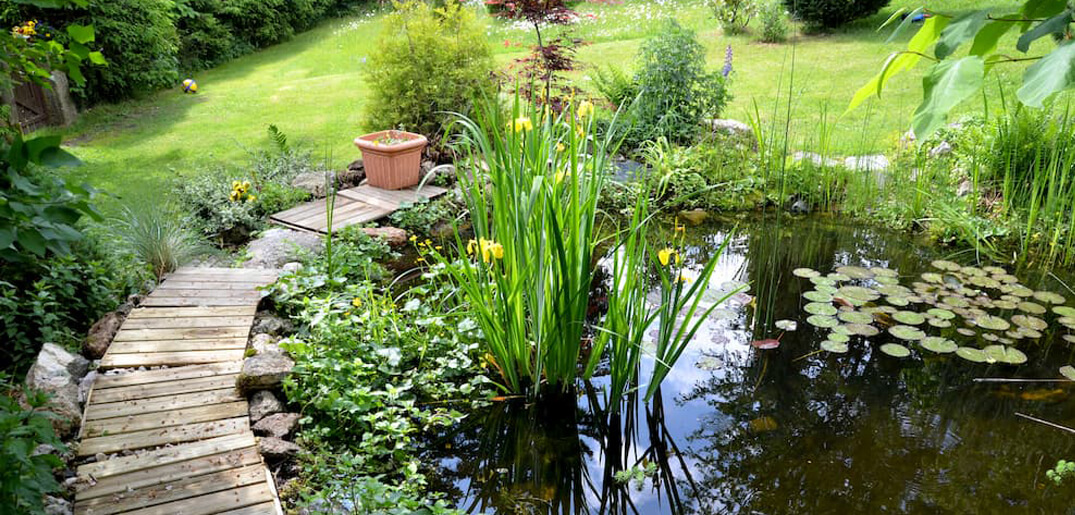When you look at a beautifully decorated pond, fringed with plants, the water crystal clear so you can see the beautiful fish swimming around, most likely you would not be wondering how the pond stays so clean – unless, perhaps, you work in pond maintenance, or are an exceptionally curious person. For most people, they would simply enjoy the benefits of having a clean and beautiful pond. But now you’ve started thinking about the topic: just how, in fact, do those beautiful ponds stay so clean, short of purchasing electronic algae control systems and machinery for the pond? Allow us to give you a clue: it’s all about pond plants.
Pond Plants Act As A Natural Water Filter
Seems too good to be true? Best believe it! Pond plants filter sediments and pollution out of your pond water, much like how tree leaves filter out carbon from the air to produce oxygen that we need to breathe. Water plants feed on nitrates in the pond water, allowing them to grow and thrive. On the other hand, algae too requires nitrates and phosphates to grow, so having more water plants can effectively starve algae into not being able to grow! Also, while it is unlikely you would cover an entire pond with pond plants, some cover is also good to block out sunlight which algae also needs, and to provide some shelter for your fish especially on hot days.
It is particularly important to note that algae grows best in warmer temperatures, and if left unchecked, algae blooms can occur in your pond water, which can become toxic and jeopardize your pond life.
Select A Variety Of Plants
Having a variety of pond plants is beneficial to your pond. Different plants have different qualities, such as the amount of nitrates they uptake, how they absorb the nutrients, as well as their role in providing shelter or supporting various environments in the pond.
In addition, selecting plants that thrive during different seasons also helps. It helps to have plants that thrive in cooler seasons, so you can prepare your pond with actively absorbing nutrients before warmer weather comes. Then, during warm seasons you can include more plants to help fight the algae growth, as well as floating plants to help provide shade and keep the water temperature down as well.
Some examples of plants are:
- Floating leaf plants – flat leaf on water surface, long stem, roots in the soil. Water lilies are the most commonly known floating leaf plants. Spatterdock is a good alternative. Such plants offer underwater hiding areas for fish to raise their fry, or babies.
- Bog plants – grow in saturated soil in shallow waters, around pond edges. These are heavy root feeders and can make a big impact on improving the water quality of your pond.
- Submerged plants – grown in pots placed at bottom of pond. Eelgrass is one such plant. These plants oxygenate the water and remove excess nutrients by their foliage.
If you are looking for planters, fertilizer or other water planting needs, you can simply find aquatic plant care products online – it’s so easy now to get your pond ready for the warmer weather!


 Blog
Blog



